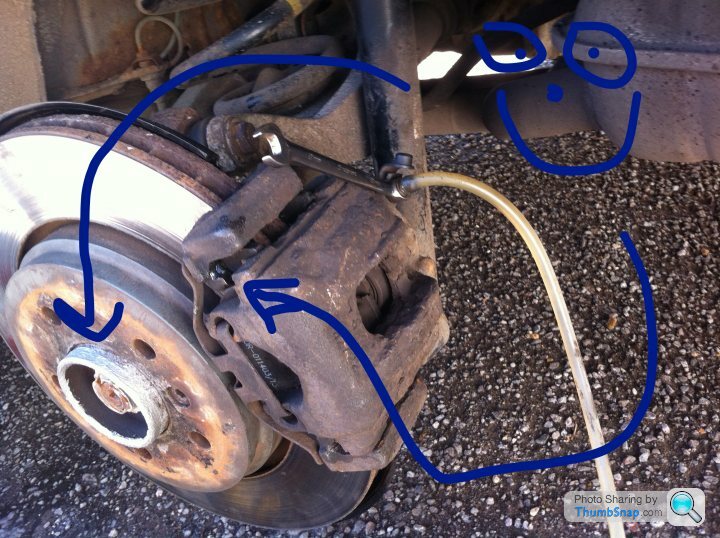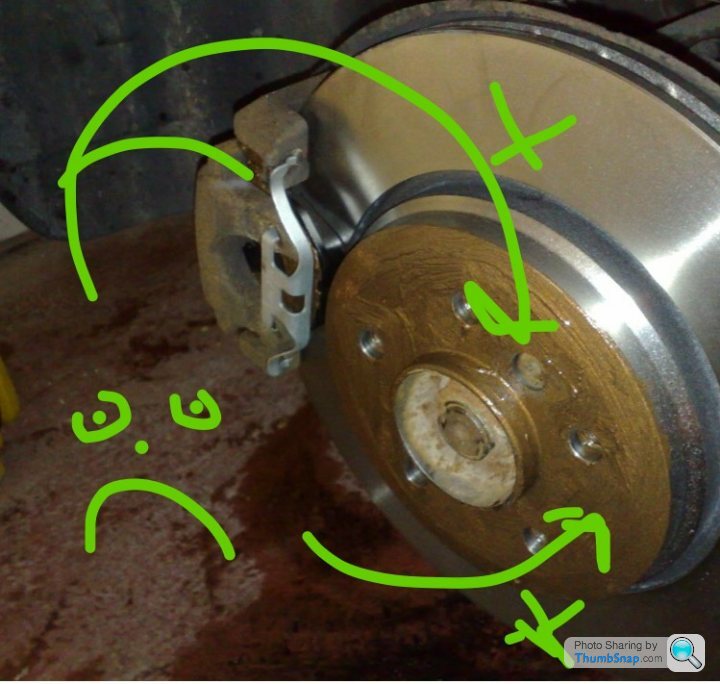Copper Grease - The actual use - Too many opinions
Discussion
Hi Guys,
First time on a forum here so I apologise if I do anything silly.
Yeah, so, Copper Grease... Can any experienced Mechanic, Technician "car guy" etc let me know what this can actually be used for. I can narrow it down... I am going to be starting back in this industry and I will be learning to do brakes. I have watched a ton of videos on brakes and have learned a lot but there is one sticky thing and that's "Copper Grease". Please help by letting me know if I can use it on the back face of a break pad, the caliper, the caliper carrier, the guide pins (although I am pretty sure I cannot put it on the pins or am I wrong?). Or even everything that it can go on if you can be bothered lol.
Apologies if my terminology for parts are wrong and please feel free to inform me of the correct names, its the only way I will learn.
Thanks in advance guys n gals!
Broon
First time on a forum here so I apologise if I do anything silly.
Yeah, so, Copper Grease... Can any experienced Mechanic, Technician "car guy" etc let me know what this can actually be used for. I can narrow it down... I am going to be starting back in this industry and I will be learning to do brakes. I have watched a ton of videos on brakes and have learned a lot but there is one sticky thing and that's "Copper Grease". Please help by letting me know if I can use it on the back face of a break pad, the caliper, the caliper carrier, the guide pins (although I am pretty sure I cannot put it on the pins or am I wrong?). Or even everything that it can go on if you can be bothered lol.
Apologies if my terminology for parts are wrong and please feel free to inform me of the correct names, its the only way I will learn.
Thanks in advance guys n gals!
Broon
Just get some cerratec/ ceramic grease for the brakes mutch better and didn't damage rubber like cooper grease can it also doesn't effect and sensor's
Copper grease is better used when you don't want metal parts rusting together such as the back of disc to the hub or on bolts exposed to road grit/water
Copper grease is better used when you don't want metal parts rusting together such as the back of disc to the hub or on bolts exposed to road grit/water
Hi Penelope, I have just read the back of the packet of the Copper Grease and it says “ you can use it on the back of brake pads and you can apply it directly to the Caliper. I don’t know how brake drums work as I am a novice so can’t help there. Maybe with this info above it can help you.
Keyboard Gangster said:
Thanks mate. Have you ever heard of Red Grease? I bought a tub of that for the Pins and the boots for the Caliper? And for the back of the brake pads.
So I can put that copper grease on the the hub where the wheel sits on yeah?
depends what you mean by "where the the wheel sits". Ok to use it on the central locating spigot but do not use it on the main face. What a lot of people (including some mechanics) do not realise is that the wheel is stopped from rotating by friction between it and the hub, not the wheel studs. The studs are just there to squash the wheel against the hub and cause that friction. With the face greased any flex in the studs causes movement which then causes the studs/nuts to either wear or come loose.So I can put that copper grease on the the hub where the wheel sits on yeah?
I have two cars recently where a wheel has come loose due to this!
btw. same goes for the mating face between the disc and the hub although that is less of an issue as the forces are smaller (engine torque).k
Keyboard Gangster said:
Hi Penelope, I have just read the back of the packet of the Copper Grease and it says “ you can use it on the back of brake pads and you can apply it directly to the Caliper. I don’t know how brake drums work as I am a novice so can’t help there. Maybe with this info above it can help you.
Thanks, I will let it rollEssentially, copper grease is an anti seize lubricant, ideally for high temperature applications, where the grease part will burn/evaporate away, leaving the copper to protect/work.
Lots of applications, it is often used to protect exposed threads on bolts subject to weather but not necessarily heat. Other products would work, but it doesn't mean you can't use it.
In the braking area, there are probably other, better products, but copper can be used in some areas. As mentioned, not near rubber, or friction surfaces or similar.
It's often down to common sense and a bit of knowledge.
Lots of applications, it is often used to protect exposed threads on bolts subject to weather but not necessarily heat. Other products would work, but it doesn't mean you can't use it.
In the braking area, there are probably other, better products, but copper can be used in some areas. As mentioned, not near rubber, or friction surfaces or similar.
It's often down to common sense and a bit of knowledge.
brman said:
depends what you mean by "where the the wheel sits". Ok to use it on the central locating spigot but do not use it on the main face. What a lot of people (including some mechanics) do not realise is that the wheel is stopped from rotating by friction between it and the hub, not the wheel studs. The studs are just there to squash the wheel against the hub and cause that friction. With the face greased any flex in the studs causes movement which then causes the studs/nuts to either wear or come loose.
I have two cars recently where a wheel has come loose due to this!
btw. same goes for the mating face between the disc and the hub although that is less of an issue as the forces are smaller (engine torque).k
Thanks very much. See when you say the "central locating spigot"... Is that also known as the "centring collar" ? Just so I am clear.I have two cars recently where a wheel has come loose due to this!
btw. same goes for the mating face between the disc and the hub although that is less of an issue as the forces are smaller (engine torque).k
Thanks again for the help.
Coilspring said:
Essentially, copper grease is an anti seize lubricant, ideally for high temperature applications, where the grease part will burn/evaporate away, leaving the copper to protect/work.
Lots of applications, it is often used to protect exposed threads on bolts subject to weather but not necessarily heat. Other products would work, but it doesn't mean you can't use it.
In the braking area, there are probably other, better products, but copper can be used in some areas. As mentioned, not near rubber, or friction surfaces or similar.
It's often down to common sense and a bit of knowledge.
Thanks very much. So any bolt that is exposed you could maybe put a bit of copper grease on it and that will protect it?Lots of applications, it is often used to protect exposed threads on bolts subject to weather but not necessarily heat. Other products would work, but it doesn't mean you can't use it.
In the braking area, there are probably other, better products, but copper can be used in some areas. As mentioned, not near rubber, or friction surfaces or similar.
It's often down to common sense and a bit of knowledge.
Thanks
Copper grease is designed for use where you have two parts in close contact which don't move relative to each other, and you want to stop them seizing. It's best thought of as a non-stick coating rather than a lubricant. You wouldn't want to use it for moving bearing surfaces, for example.
"Copper greases" are actually bentone greases with small traces of copper and other metals, together with dye to make it appear copper coloured. It was originally developed (by K.S. Paul Products and marketed as Moly-Paul PBC) as an anti sieze compound for industrial applications. The motor and marine industries rapidly discovered that it performed well under salty and otherwise arduous conditions. It may be used wherever static or minimal movement siezure is a risk; parking brake cables, drum brake adjusters, the metal to metal moving part of brake callipers (where it also helps to eliminate brake squeal), threaded connections, etc. It is not easily washed away, and does not melt, so is particularly useful for anything exposed to the elements or heat. Whilst it does have some lubrication properties, it is not suitable for use in bearings, nor on austenitic materials.
Olivera said:
What is going on there? Why would you lubricate just the wheel locating collar on the hub? This just helps you put the wheel on, when the bolts are done up the wheel will hardly even be touching this part.
The part with silver grease on is steel. The alloy of an alloy wheel reacts with the steel and galvanic corrosion occurs. This can cause the wheels to seize to the hubs. The aluminium grease prevents this. Gassing Station | Home Mechanics | Top of Page | What's New | My Stuff






